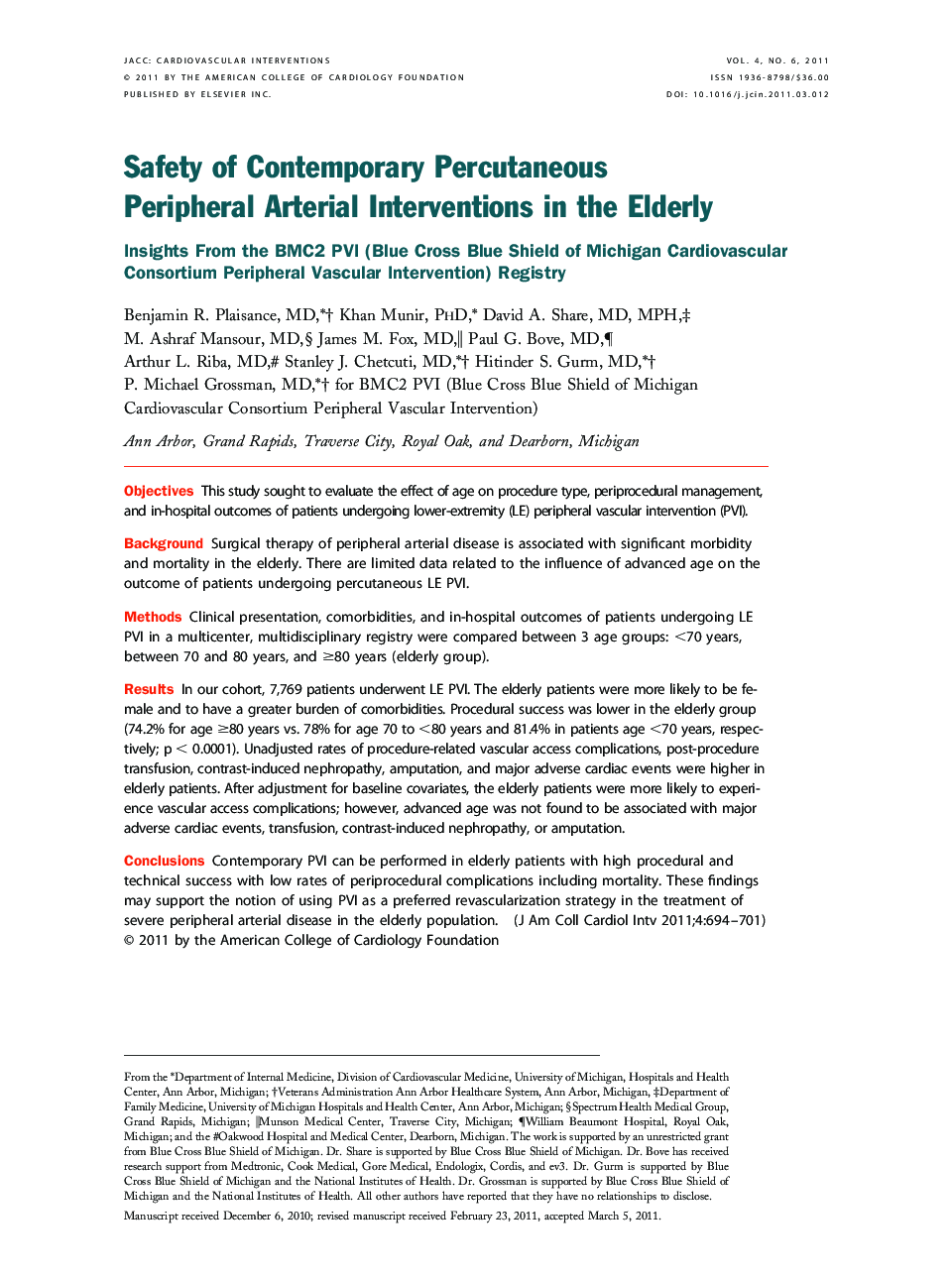| کد مقاله | کد نشریه | سال انتشار | مقاله انگلیسی | نسخه تمام متن |
|---|---|---|---|---|
| 2941427 | 1177070 | 2011 | 8 صفحه PDF | دانلود رایگان |

ObjectivesThis study sought to evaluate the effect of age on procedure type, periprocedural management, and in-hospital outcomes of patients undergoing lower-extremity (LE) peripheral vascular intervention (PVI).BackgroundSurgical therapy of peripheral arterial disease is associated with significant morbidity and mortality in the elderly. There are limited data related to the influence of advanced age on the outcome of patients undergoing percutaneous LE PVI.MethodsClinical presentation, comorbidities, and in-hospital outcomes of patients undergoing LE PVI in a multicenter, multidisciplinary registry were compared between 3 age groups: <70 years, between 70 and 80 years, and ≥80 years (elderly group).ResultsIn our cohort, 7,769 patients underwent LE PVI. The elderly patients were more likely to be female and to have a greater burden of comorbidities. Procedural success was lower in the elderly group (74.2% for age ≥80 years vs. 78% for age 70 to <80 years and 81.4% in patients age <70 years, respectively; p < 0.0001). Unadjusted rates of procedure-related vascular access complications, post-procedure transfusion, contrast-induced nephropathy, amputation, and major adverse cardiac events were higher in elderly patients. After adjustment for baseline covariates, the elderly patients were more likely to experience vascular access complications; however, advanced age was not found to be associated with major adverse cardiac events, transfusion, contrast-induced nephropathy, or amputation.ConclusionsContemporary PVI can be performed in elderly patients with high procedural and technical success with low rates of periprocedural complications including mortality. These findings may support the notion of using PVI as a preferred revascularization strategy in the treatment of severe peripheral arterial disease in the elderly population.
Journal: JACC: Cardiovascular Interventions - Volume 4, Issue 6, June 2011, Pages 694–701